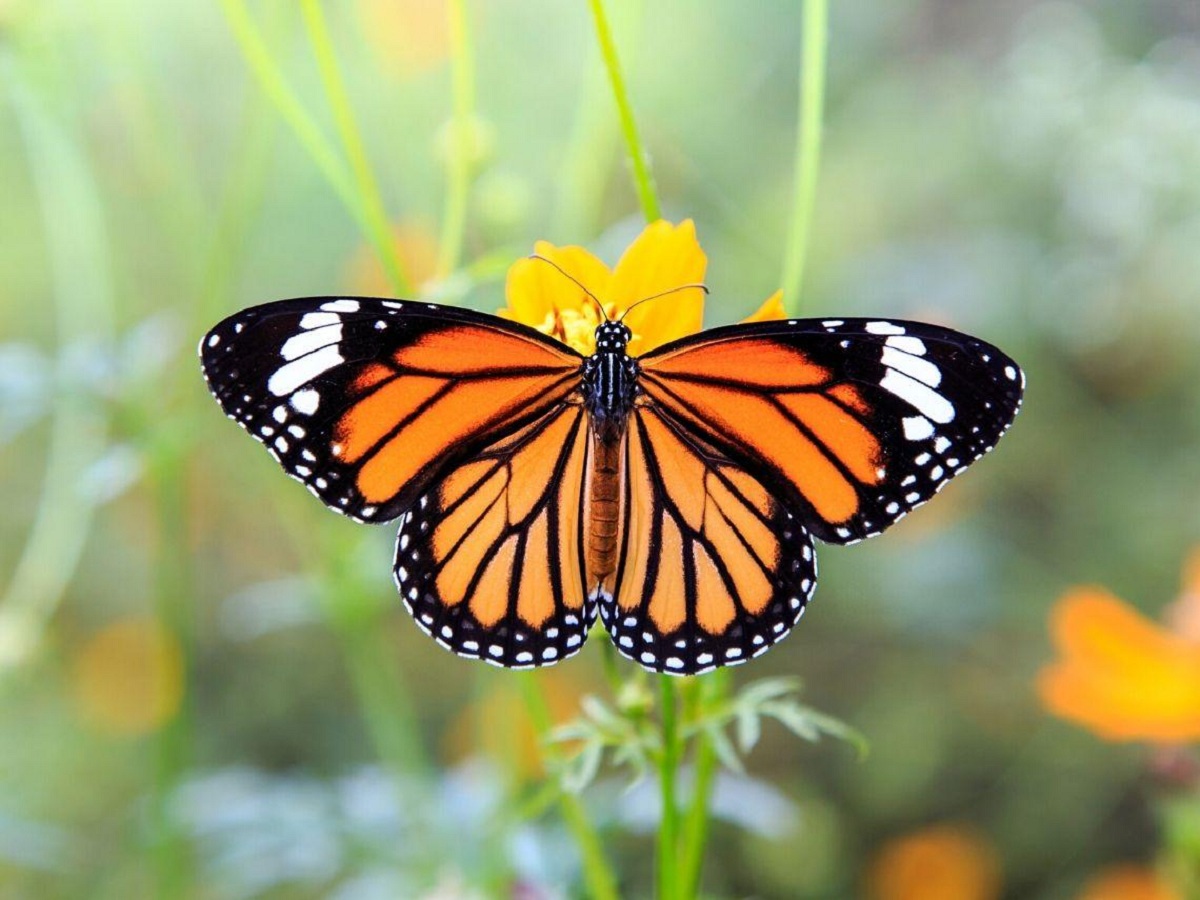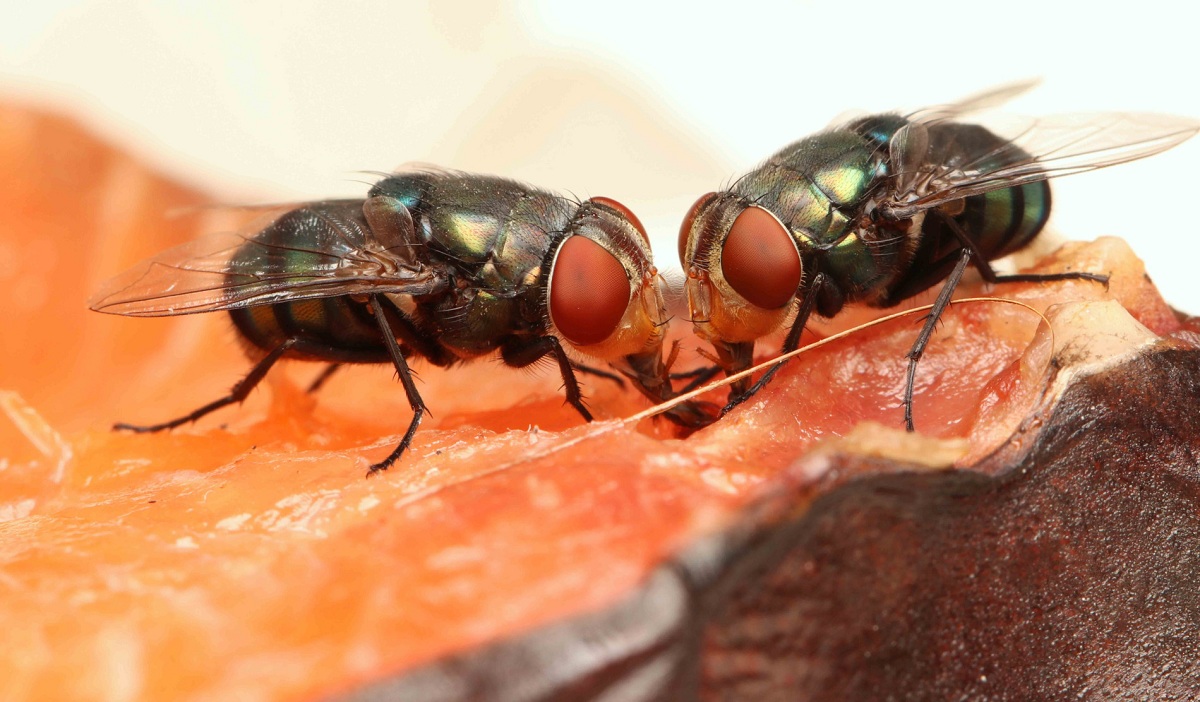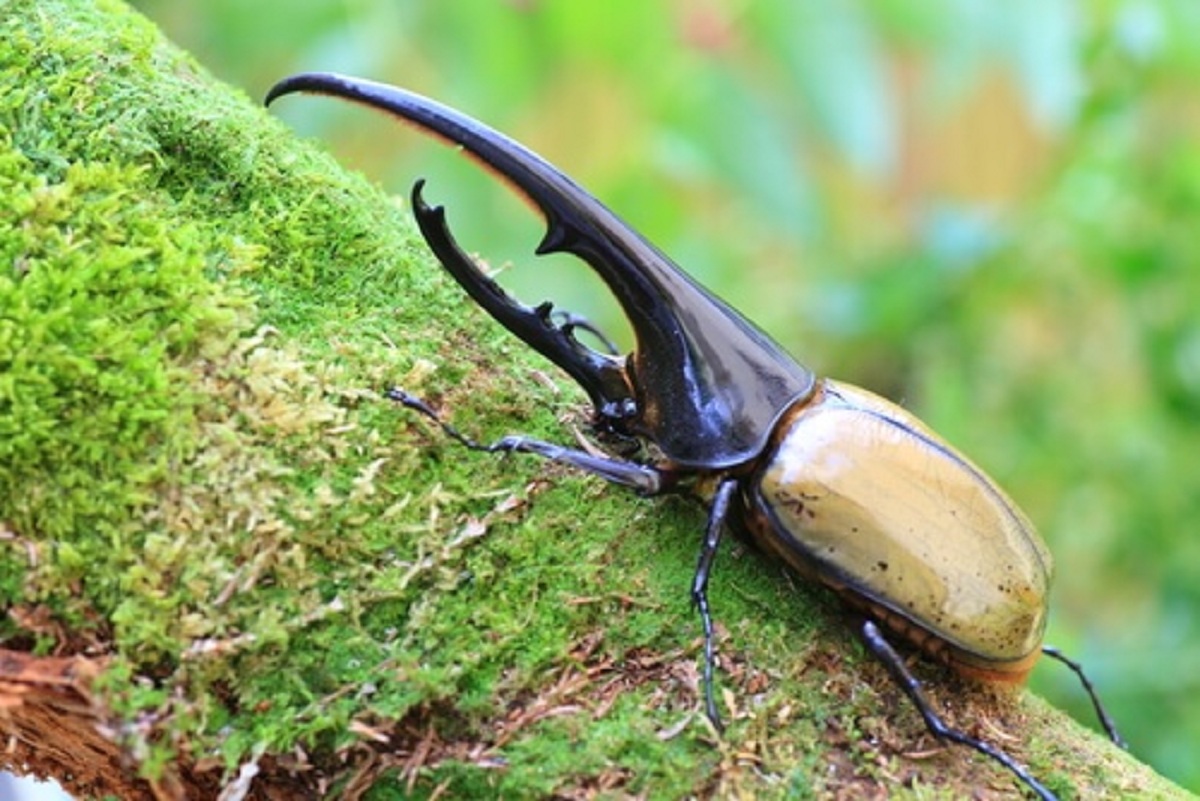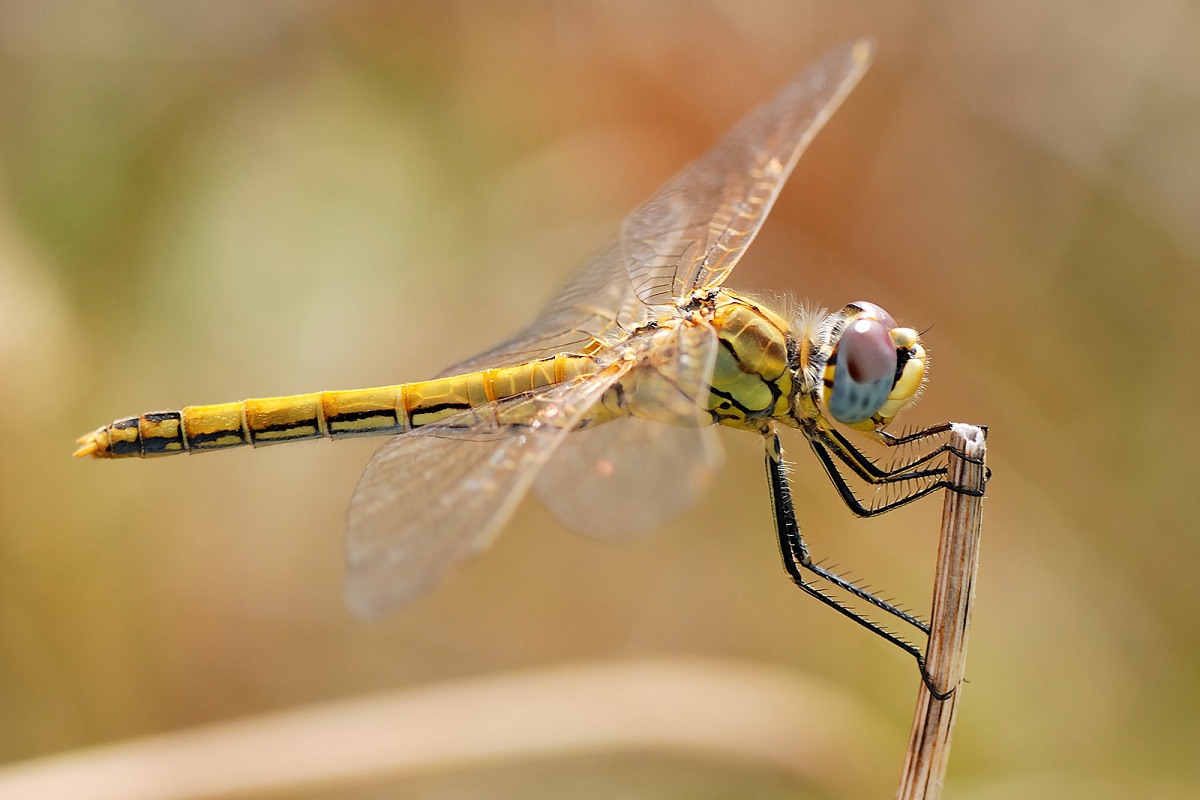
On this planet there are millions of insects spread all over the world. They are the largest group of living beings and have very varied characteristics depending on the group to which they belong. Some share some peculiarities such as being animals with an exoskeleton. There are different types of flying insects They have the ability to fly and move at high speed.
In this article we are going to tell you about all the characteristics, types and species of flying insects.
Key features

They are the only invertebrates that have wings. The appearance of the wings occurred when all the dorsal plates of the thorax expanded to form this organ. At first they only served to glide, but over the years they have developed to such an extent that they can fly when necessary. Thanks to these wings they can move, search for food, flee from predators and mate with other individuals.
The size, shape, and texture of the wings of flying insects are very different. They cannot be classified in a single way, but it is necessary to point out what are the main particularities. Let's see what they are:
- The wings are always in an even number. This is due to the bilateral symmetry that insects have.
- They are located in the mesothorax and metathorax.
- Some of the species must lose their wings when they reach adulthood. There are also some specimens that have wings because they are sterile and not used to find a partner during the mating season.
- They are formed by the union of an upper and a lower membrane.
- All wings have nerve veins or nerves. It is from here that they can create momentum so they can move their wings fast enough to fly.
- The inside of the wings contain nerves, trachea and hemolymph.
In addition to the peculiarities that flying insects have because they have an exoskeleton, they can also be very different from each other. Most of them are classified by different groups according to their characteristics.
Types of flying insects
We are going to see what are the general characteristics of flying insects and what are the ones that are kept in common. Although we have mentioned that many of them have some similar characteristics, there are also some that are different depending on various criteria. Let's see what are the groups in which flying insects are divided:
- Orthoptera
- Hymenoptera
- dipter
- lepidoptera
- Blattodea
- coleoptera
- odanata
Orthopteran flying insects
Orthoptera flying insects are those that appeared on planet earth during the Triassic period. It is characterized mainly by having a chewing-type oral apparatus. Most of the animals that belong to this group are jumping insects like crickets and grasshoppers. Their wings are straight in shape and not all insects belonging to this order are the same size. Some of them do not have wings so they are not flying insects. Even so, they belong to the Orthoptera group. Some of the examples of this group of insects are the migratory locust, llanera lobster and desert lobster.
Hymenoptera
They are a group of insects that appeared during the Jurassic period.. All of them have an abdomen divided into segments. Its tongue is capable of elongating or retracting smooth standing buccal is chewing-the minor. All these insects live in society and the sterile breeds stand out for lacking wings. The order of the Hymenoptera is one of the largest that exist since today there are more than 150.000 different species. Some of the most common flying insects such as wasps, bumblebees, bees, and ants belong to the Hymenoptera group.
dipterous flying insects

Most of them appeared during the Jurassic period and have short antennae. The apparatus or mouthpiece is of the sucking-picking type. They have some curiosities and it is that they do not have 4 at as it happens with most insects. Due to evolution it only has two wings. In this group of insects we find the flies, mosquitoes, horseflies and jigsaws.
Lepidoptera
They are more modern insects since they appeared on this planet during the tertiary period. Lepidoptera have a tube-like siphoning mouthpart. Its wings are of the membranous type and have imbricated scales of the unicellular type and with a flattened shape. In the group of lepidopterous flying insects we find moths and butterflies.. One of the insects that belongs to this group and that are more beautiful and curious is the bird-like butterfly.
Blathoid flying insects
They are the group of animals that divides those that have a wider exoskeleton that can protect it from blows. They also have the but are not often used to move. Cockroaches are classified under this group. They are flattened insects that are distributed throughout much of the world. Although not all of them have wings, many of them can fly. They can only in exceptional moments such as when they are totally cornered.
Beetles

They are flying insects that have hard elytra instead of conventional wings. They serve to protect the insect when they are at rest. These animals stand out for having a biting-sucking mouthparts and its legs are elongated. Fossils of these insects begin to appear during the Permian period. Among the most representative within this group we have beetles, ladybugs and fireflies.
Odonate flying insects

Finally, this group of insects appeared during the Permian period and have large eyes and elongated cylindrical bodies. There are more than 6.000 species in this group. Among which we find dragonflies or the devil's knights. They stand out for having large eyes and cylindrical and elongated bodies. Its wings are of the membranous type and are usually very thin and transparent. The emperor dragonfly is one of the insects that belongs to this most common and well-known group.
As you can see, the list of flying insects in the world is very long and complex. I hope that with this information you can learn more about the main characteristics of flying insects and their classification.